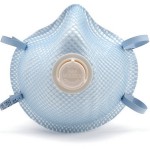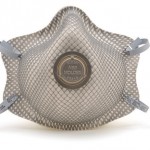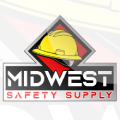Understanding what is the correct piece of Respiratory Protection Equipment for your application is an Important Decision for all Safety Managers. Air purifying Respirators are subject to; and tested under the guidelines in OSHA Guideline 42 CFR Part 84.
Current Available Breathing Masks
Which states the following;
1910.134(a)(1) In the control of those occupational diseases caused by breathing air contaminated with harmful dusts, fogs, fumes, mists, gases, smokes, sprays, or vapors, the primary objective shall be to prevent atmospheric contamination. This shall be accomplished as far as feasible by accepted engineering control measures (for example, enclosure or confinement of the operation, general and local ventilation, and substitution of less toxic materials). When effective engineering controls are not feasible, or while they are being instituted, appropriate respirators shall be used pursuant to this section.
be to prevent atmospheric contamination. This shall be accomplished as far as feasible by accepted engineering control measures (for example, enclosure or confinement of the operation, general and local ventilation, and substitution of less toxic materials). When effective engineering controls are not feasible, or while they are being instituted, appropriate respirators shall be used pursuant to this section.
1910.134(a)(2) A respirator shall be provided to each employee when such equipment is necessary to protect the health of such employee. The employer shall provide the respirators which are applicable and suitable for the purpose intended. The employer shall be responsible for the establishment and maintenance of a respiratory protection program, which shall include the requirements outlined in paragraph (c) of this section. The program shall cover each employee required by this section to use a respirator.
Therefore 42 CFR Part 84 clearly states that it is the responsibility of the employer to provide the appropriate Respiratory Protection relative to the breathing hazard for the employee. So clearly that we now understand that it is the duty of the employer to provide particulate respirator protection, now we must determine what is the appropriate Particulate Respirator to select for your application.
To summarize in advance; there are three (3) categories of Particulate Respirators ( N-Series, R-Series, and P-Series ), then within these three categories of particulate Respirators are three (3) levels of protection within each category ( 95, 99 & 100 ). So three Categories, with three levels within those categories; making a Total of 9 Different Classes of particulate Respirators. Particulate Respirators are sometimes referred to as a "dust Mask" which is not correct. A Dust mask is actually that, a dusk mask. It is not tested and subject to the Guidelines of OSHA 42 CFR Part 42 described above. Some will refer to all Particulates Respirators as N95 Masks, or N95 Respirators which as will see is not entirely accurate either.
Respirators. Particulate Respirators are sometimes referred to as a "dust Mask" which is not correct. A Dust mask is actually that, a dusk mask. It is not tested and subject to the Guidelines of OSHA 42 CFR Part 42 described above. Some will refer to all Particulates Respirators as N95 Masks, or N95 Respirators which as will see is not entirely accurate either.
Let's Look at a Further Breakdown of Particulate Respirators broken down below for a better understanding of their application and what they do.
Class Efficiency Test Max (mg) Containment Type Service Life
N100 99.97%
N99 99.0% 200 Solid & Water One work shift
N95 95.0%
_______________________________________________________________________
R100 99.97%
R99 99.0% 200 Any One work shift
R95 95.0%
________________________________________________________________________
P100 99.97%
P99 99.0% Stabilized efficiency Any One work shift
R95 95.0%
________________________________________________________________________
Usage and Limitations
N-series particulate respirators are not resistant to oil and therefore should not be used in situations where oil vapor is present in the air either from liquid or via an aerosol. R-Series Particualte Respirators are for use when their is oil present and P-Series Particulate Respirators should be used when there are oil aerosols present in the workplace.
Particulate Respirator use should be limited to one work shift and employees should be provided a new Respirator for every shift under the Guidelines described above.
The Key decisions as to which type of Respirator should be made by the appropriate individuals based upon;
- Identifying the levels of concentration in the air at the work place
- Understanding the Permissible Limits by OSHA
- The Hazard ratio in the Particulate Concentration
- The Immediate Dangerous to Life concentration
Understanding your hazard and concentrations determine what is the proper Respirator for your workplace. Particulate Respirators may not be the correct choice in some situations and Full Face Respirator Protection may be required. Texas Safety Supply carries both the 3m Full Face Respirators and North Full Face Respirators as well as the appropriate Cartridge for your application.



